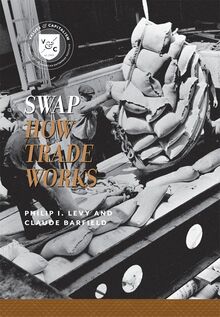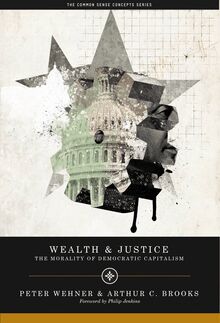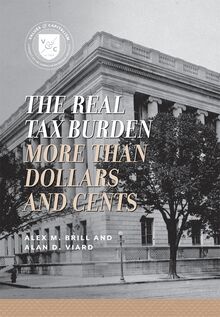-
 Univers
Univers
-
 Ebooks
Ebooks
-
 Livres audio
Livres audio
-
 Presse
Presse
-
 Podcasts
Podcasts
-
 BD
BD
-
 Documents
Documents
-
- Cours
- Révisions
- Ressources pédagogiques
- Sciences de l’éducation
- Manuels scolaires
- Langues
- Travaux de classe
- Annales de BEP
- Etudes supérieures
- Maternelle et primaire
- Fiches de lecture
- Orientation scolaire
- Méthodologie
- Corrigés de devoir
- Annales d’examens et concours
- Annales du bac
- Annales du brevet
- Rapports de stage
La lecture à portée de main
Vous pourrez modifier la taille du texte de cet ouvrage
Découvre YouScribe en t'inscrivant gratuitement
Je m'inscrisDécouvre YouScribe en t'inscrivant gratuitement
Je m'inscrisEn savoir plus
Vous pourrez modifier la taille du texte de cet ouvrage
En savoir plus

Description
Sujets
Informations
| Publié par | AEI Press |
| Date de parution | 16 octobre 2011 |
| Nombre de lectures | 0 |
| EAN13 | 9780844772073 |
| Langue | English |
Informations légales : prix de location à la page 0,0450€. Cette information est donnée uniquement à titre indicatif conformément à la législation en vigueur.
Extrait
Distributed by arrangement with the National Book Network 15200 NBN Way, Blue Ridge Summit, PA 17214
To order call toll free 1-800-462-6420 or 1-717-794-3800.
For all other inquiries please contact AEI Press, 1150 17th Street, N.W., Washington, D.C. 20036 or call 1-800-862-5801.
Copyright © 2011 by the American Enterprise Institute for Public Policy Research, Washington, D.C.
ALL RIGHTS RESERVED.
No part of this publication may be used or reproduced in any manner whatsoever without permission in writing from the American Enterprise Institute except in the case of brief quotations embodied in news articles, critical articles, or reviews. The views expressed in the publications of the American Enterprise Institute are those of the authors and do not necessarily reflect the views of the staff, advisory panels, officers, or trustees of AEI.
Levy, Philip I.
Swap : how trade works / Philip I. Levy and Claude Barfield.
p. cm.
Includes bibliographical references.
ISBN-13: 978-0-8447-7206-6 (pbk.)
ISBN-10: 0-8447-7206-2 (pbk.)
ISBN-13: 978-0-8447-7207-3 (ebook)
ISBN-10: 0-8447-7207-0 (ebook)
1. United States—Commerce. 2. International trade. I. Barfield, Claude E. II. Title.
HF1455.L45 2011
382.0973—dc23
ACKNOWLEDGMENTS
The authors would like to thank Dharana Rijal and Tobias Baude for excellent research support in the completion of this study.
1 SPECIALIZATION AND TRADE
Few who read this book will go on to become subsistence farmers, grow their own food, sew their own clothes, and whittle branches for entertainment. Not that there’s anything wrong with all that.
Instead, readers will likely specialize and trade. You may grow cash crops as farmers; produce machine tools in factories; or provide health care to your fellow citizens. We rarely think about how dependent each of these vocations is on trade. As valuable as machine tools may be, you cannot eat them, nor wear them, nor live in them. The only way a factory worker is able to meet her basic needs is to trade the machine tools she produces for other goods and services.
In a rudimentary economy, our worker would barter her tools directly for eggs or cloth. In a modern economy, she would receive money for her work, which is easier to store and significantly less fragile than eggs. But it is the same basic idea either way.
It is not hard to see the gains from specialization. If a child breaks his wrist in a fall, we would not be satisfied to have it treated by the class teacher, nor the school nurse, nor even a family doctor. We would want the child seen by an orthopedist, someone who specializes in understanding the intricacies of how bones function and mend. If there are to be such specialists, someone else will need to grow their food and build their houses. The idea that individuals will specialize and be more productive is central to how modern economies function and advance.
The economist Angus Maddison provides some striking numbers about just how far specialization and trade have brought us. 1 If we compare the United States in 1820 to the United States in 2001, early Americans were more self-sufficient, worked harder, and earned less. In 1820, they worked an average of 968 hours per person per year, versus 770 in 2001. But for each working hour, the early Americans produced $1.49 worth of goods and services in 1820, compared to $28.59 in 2001 (a comparison that accounts for inflation).
Of course, some of this growth came from great discoveries, such as how to harness electricity, how to use engines for locomotion, and how to produce disease-resistant and well-fertilized crops. Yet even such discoveries came from the specialization of scientists and inventors.
What, you may ask, does any of this have to do with international trade, with current account deficits, with trade agreements and commercial disputes? The principle is the same. Countries can specialize in producing those goods and services they can make at their lowest cost and trade with other countries for mutual gain.
Although the underlying principle of specialization and market exchange may be the same, there are some important differences when we trade across international borders rather than trading across towns.
Perhaps the foremost difference is that it is much easier to intervene internationally. Countries can apply taxes to goods when they cross their borders. Such import taxes, known as tariffs, were once quite common and quite high. The economic historian Doug Irwin writes of “The Great Tariff Debate of 1888” when tariff revenue amounted to more than 30 percent of the value of U.S. imports. This raised the price of goods produced abroad, and so Americans bought fewer of them. 2
At the time, Democrats were eager to cut tariffs because the government had too much revenue (imagine!), while Republicans wanted to maintain them so as to protect domestic producers from import competition. For our purposes, it is the desire for protection, to shield businesses from foreign competitors, that is most interesting.
For anyone running a business, life is much easier without competition. There is less pressure to keep prices low or to innovate. When there is competition, there will be businesses that lose. Of course, consumers have the opposite interests. Domestically, consumer interests have often won out. New competition brings cheaper food, new products, and better services. We have antitrust laws to encourage competition, and the Constitution prohibits states from erecting barriers to commerce between them. Sometimes that has meant brutal and painful competition, as in the twentieth century when the textile industry of the northeastern United States was largely replaced by textile firms in the Southeast.
In international trade, there is nothing to match the constitutional prohibition on interstate trade barriers, and consumer interests are less politically potent. Over time, in the wake of damaging episodes of protectionism, countries have reached agreements to reduce and cap the sorts of barriers they erect against each other. Such agreements, like the global General Agreement on Tariffs and Trade (GATT) or the continental North American Free Trade Agreement (NAFTA), have been politically controversial and wield nothing like the force of the U.S. Constitution. Nor are they comprehensive in their support for free trade. Exceptions abound, and pressures to protect domestic producers increase in difficult economic times.
Thus, in comparing domestic and international competition, the same gains from specialization and competition apply, but it is both easier and more tempting for governments to intervene internationally. It is not impossible to block domestic commercial transactions, just harder. Because domestic and international competition share the same market principles, trade can serve as a prime battleground for debates about the merits of free markets and free enterprise.
The astute reader, at this point, may begin to wonder whether this depiction of trade—as international specialization and competition—has anything to do with the sort of trade depicted in the newspapers or on the web. There, the discussion concerns jobs lost, or unfair practices abroad, or soaring deficits, or decisions by heavily acronymed international organizations. A major purpose of this book will be to connect the abstract vision of trade with its portrayal in the daily media, thereby providing a guide to important policy debates.
The next chapter grapples with the question of who specializes in what. It will discuss the idea of comparative advantage, one of the more powerful and less intuitive ideas in economics. It will also ask why Europe ships cars to the United States and the United States ships other cars right back to Europe, which seems to fly in the face of arguments about specialization. It will also consider what it means when specialization is due to another government’s policies, not just natural factors such as land and weather.
Chapter 3 asks whether and how trade helps Americans. It asks whether globalization, in the form of trade, inexorably drives down wages or destroys jobs. Although there are certainly losers from global competition, the chapter shows that trade is sometimes blamed when other forces—such as domestic competition or new technologies—are really at play. It recounts the remarkable record of growth and prosperity that have accompanied America’s increasing openness to world trade.
Chapter 4 turns around the question of the preceding chapter and asks what trade does for trading partners, particularly in the developing world. Popular campaigns for “fair trade” often either imply or state outright that trade exploits the cheap labor of poorer countries. In contrast, trade’s advocates argue that it is indispensable in fostering economic growth.
In these chapters’ discussion of whether trade helps or hurts, the judgment is based on whether people enjoy better jobs or higher wages. That can be a difficult measure to observe. A poor but common proxy is to use trade deficits as a way to keep score—the gap between the value of goods a country ships abroad and those it imports. That is the subject of chapter 5. It draws a sharp distinction between trade imbalances with a single partner, such as China, and trade imbalances with the rest of the globe. In neither case does the trade deficit emerge as a very good measure of trade policy success or national well-being.
Chapter 6 considers some of the many ways that governments intervene in trade and their effects on ordinary people. For example, if one country slaps a tariff on another’s exports, who ends up paying that tariff? And if tariffs serve to protect domestic producers and raise revenue, why, then, do we see a dizzying array of other types of trade barriers?
To this point, we have treated trade as a simple exchange of goods across borders. Modern trade is more complex, and that complexity is controversial. C
-
 Univers
Univers
-
 Ebooks
Ebooks
-
 Livres audio
Livres audio
-
 Presse
Presse
-
 Podcasts
Podcasts
-
 BD
BD
-
 Documents
Documents
-
Jeunesse
-
Littérature
-
Ressources professionnelles
-
Santé et bien-être
-
Savoirs
-
Education
-
Loisirs et hobbies
-
Art, musique et cinéma
-
Actualité et débat de société
-
Jeunesse
-
Littérature
-
Ressources professionnelles
-
Santé et bien-être
-
Savoirs
-
Education
-
Loisirs et hobbies
-
Art, musique et cinéma
-
Actualité et débat de société
-
Actualités
-
Lifestyle
-
Presse jeunesse
-
Presse professionnelle
-
Pratique
-
Presse sportive
-
Presse internationale
-
Culture & Médias
-
Action et Aventures
-
Science-fiction et Fantasy
-
Société
-
Jeunesse
-
Littérature
-
Ressources professionnelles
-
Santé et bien-être
-
Savoirs
-
Education
-
Loisirs et hobbies
-
Art, musique et cinéma
-
Actualité et débat de société
- Cours
- Révisions
- Ressources pédagogiques
- Sciences de l’éducation
- Manuels scolaires
- Langues
- Travaux de classe
- Annales de BEP
- Etudes supérieures
- Maternelle et primaire
- Fiches de lecture
- Orientation scolaire
- Méthodologie
- Corrigés de devoir
- Annales d’examens et concours
- Annales du bac
- Annales du brevet
- Rapports de stage












